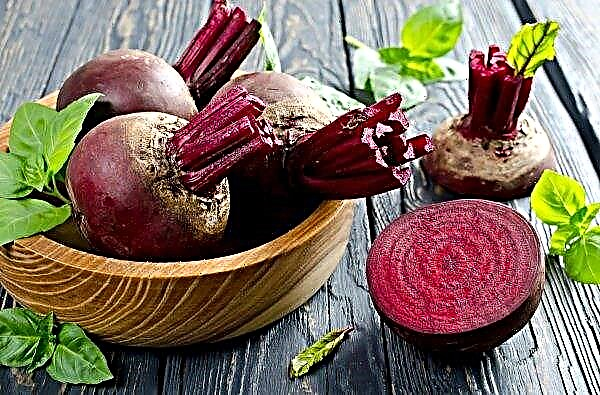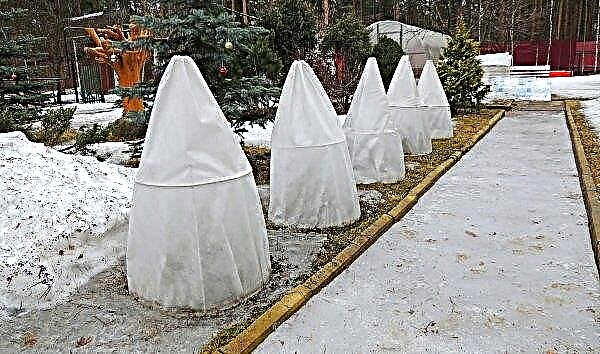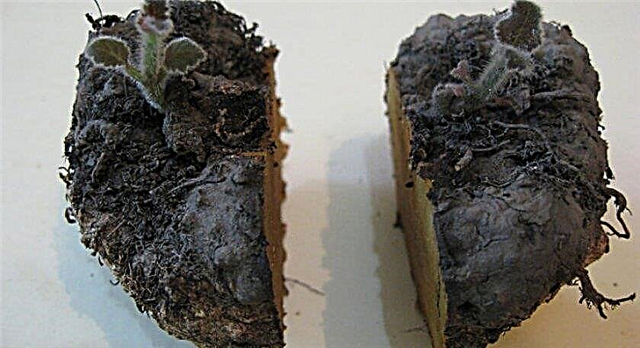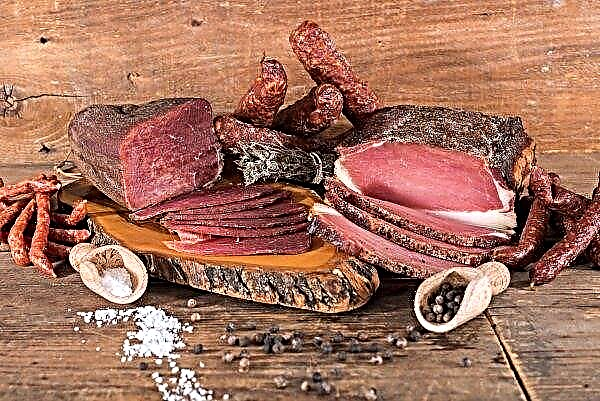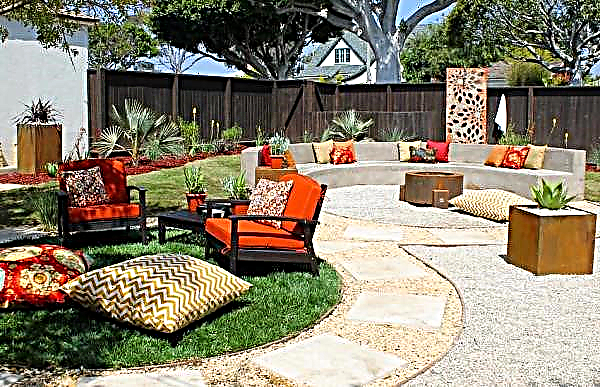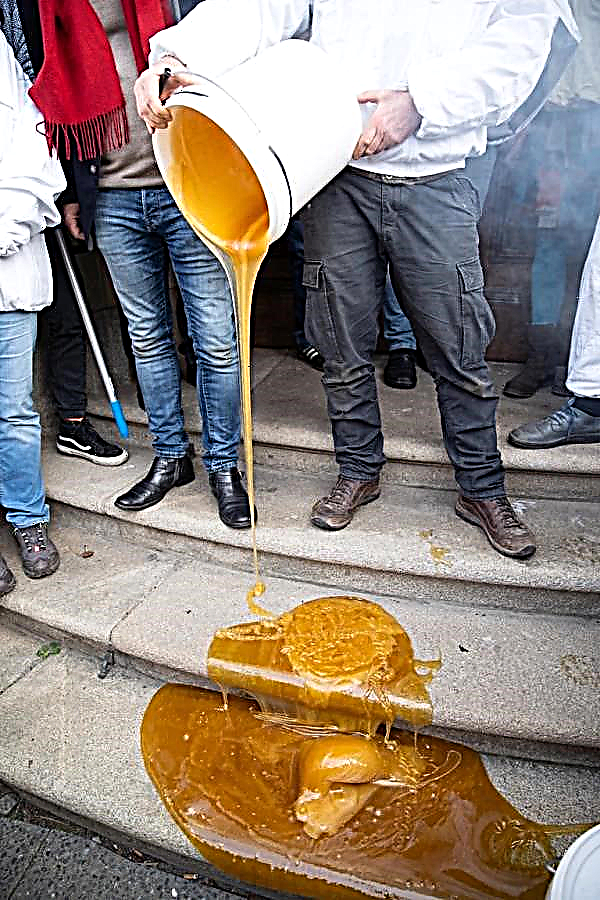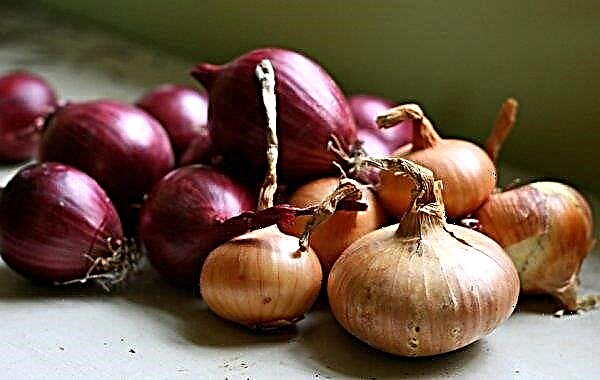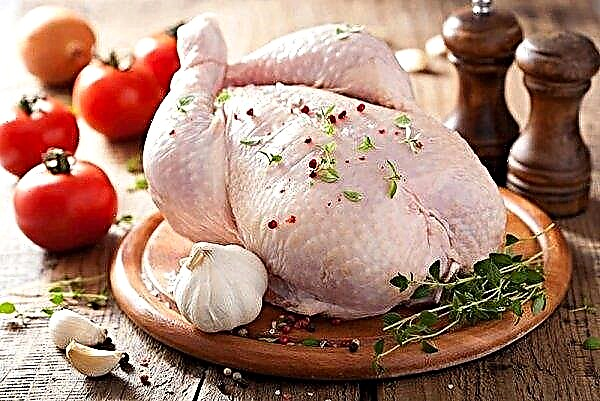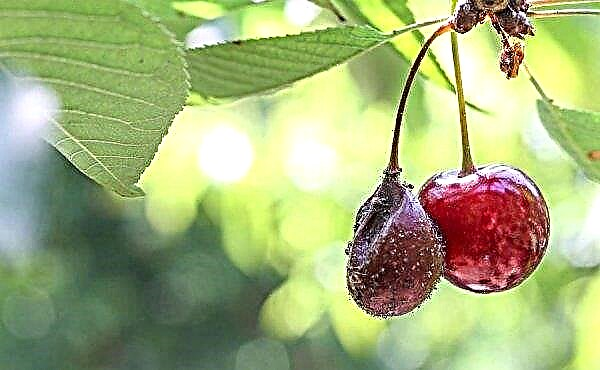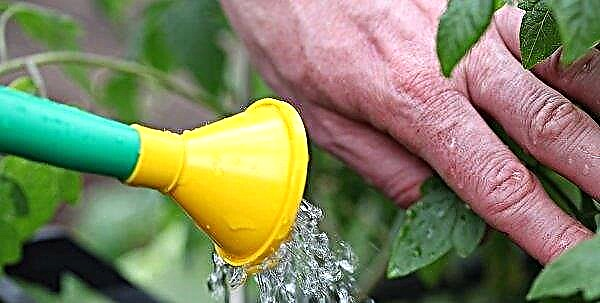The conical shape of the crown of the Canadian Sanders Blue spruce, combined with small blue needles, will become a spectacular decoration of any site. It grows very slowly, so do not be afraid of the enormous size inherent in ordinary spruce. A detailed description of the variety Sanders Blue (Picea glauca Sander's Blue), read further in the article.
Botanical Description
Sanders Blue is a recently bred decorative Canadian spruce variety. The tree has a dwarf size, conical shape and deserves the attention of designers. Beautiful soft blue needles Sanders Blue harmoniously accentuate any garden composition. It can be grown both solo and as part of floral landscape groups.
It originates from the famous Konica variety, which was obtained in one of the French nurseries. During the selection, several mutated samples of this variety were selected and a number of completely new ones were created on their basis, including Sanders Blue.
Important! The tree can grow well on sandy soils and peat. Sanders Blue also tolerates drought.
Variety characteristics:
- synonymous names: gray;
- family: Pine;
- tree shape: conical, evenly pubescent, compact, dwarf;
- growth rate: slow, not more than 7 cm during the growing season;
- needles color: gray-blue, can be bright blue, young needles are lighter than last year;
- flowering time: does not bloom;
- shoots: multiple, small, with soft, thin, short needles;
- USDA zone: 3–6;
- watering: moderate;
- sun: photophilous;
- soil requirements: moderate, grows on any type of soil;
- acidity: any, acidic and alkaline soils are acceptable, but they should all be moderately saturated with organic nutrients;
- suitable for cultivation in alpine hills, rocky or heather gardens;
- service: minimal.
Video: Spruce Sanders Blue
Use in landscape design
The main thing that distinguishes this variety from the "progenitor":
- more compact form;
- slightly, but still narrowed crown;
- significantly reduced sizes.
Did you know? As a top dressing for spruce, you can use the infusion of onion husks, which watered the soil immediately after planting.
The color of the Sanders Blue needles is lighter, and the young shoots have a bluish-gray hue. With age, they become more green.
Their distinguishing features:
- small size (up to 2 cm);
- high density;
- softness.

In the period when the needles of new growth appear, the tree becomes more spectacular due to the contrast of colors. Sanders Blue grows rather slowly, up to 7 cm during the vegetative cycle. When the spruce turns 10 years old, its height will be about 0.8 m. If it is not disturbed, then it can reach a maximum height of 2-3 m, and a width of up to 2 m.
In landscape design, spruce will look good in the foreground of buildings. It is used for decoration of gardens, decorative hedges, as well as in compound flower arrangements in combination with red and yellow bushes of boxwood or Barberry of Thunberg. Compared to other dwarf rocks, Sanders Blue is not prone to sunburn. And this allows you to pay him not so much attention as other dwarf breeds.
Compared to other dwarf rocks, Sanders Blue is not prone to sunburn. And this allows you to pay him not so much attention as other dwarf breeds.
Landing
The tree grows well on moist, well-drained soils, in bright sunlight. Loyal to light shading. Be sure to ensure good air circulation around it so that moisture does not stagnate in the crown. Spruce is intolerant of urban air pollution, so plant it away from the road.
 Sanders Blue reacts negatively to compacted soil or an excess of moisture, so well-drained soil will be required on the site. Or in the landing pit you need to create a drainage layer.
Sanders Blue reacts negatively to compacted soil or an excess of moisture, so well-drained soil will be required on the site. Or in the landing pit you need to create a drainage layer.
It can be made of pebbles, coarse sand or broken brick. The layer thickness will be 15–20 cm. When planting in groups, the required distance between individual specimens is from 2 to 3 m. The depth of the landing pits is 50–70 cm.
Video: Planting Canadian Spruce
Seedling Selection
The convenience of acquiring fir trees in nurseries is that they are delivered in containers with soil containing an increased dose of fertilizer. When planting, such a coniferous tree is planted with this soil and quickly takes root.
Buying additional fertilizers for planting is not necessary.If you buy a seedling yourself, then choose one that does not have any signs of pests. Avoid trees with injured branches or a trunk. The roots of spruce should also be quite developed. Their correct color is creamy white.Important! If, after transplanting, the tree begins to drop needles, this means that the soil in the pot has been overdried. Just continue to water it regularly, and the needles will gradually recover to their normal state.

Landing site preparation
To select a landing site, inspect the site:
- Determine the direction of the wind. Fir trees are loyal to it, but can be used to create a fence for more delicate plants: peaches, roses, grapes, etc.
- Think about where the tree can best demonstrate its decorative qualities.
- Mow the grass in the selected area for planting. To destroy the weeds completely, cover the soil with a film. Under the influence of the sun, the soil under the polyethylene will warm up to + 60 ° C. As a result, grass and pests will die. If you do this 4 weeks before planting, the grass will die completely.
- Having dug up a site after warming up under the film, you will get soil with fertilizers.

Step-by-step instruction
Planting a spruce consists in the following steps:
- Check how well the soil passes water. Dig a landing hole 70 cm deep and fill it with water. When she is completely gone, refill. Now take the time. If the water needs more than 2 hours, then you need to do a drainage layer.
- To do this, place a pebble layer at the bottom of the pit. Its thickness is up to 20 cm.
- If the soil is too dense, mix it with organic fertilizers, such as compost or humus. Or add 100–150 g nitroammophoski under each seedling.
- Remove the tree from the container.
- Place pits at the bottom along with the soil in which it grew.
- Add soil so that the spruce is planted at the same level as it grew in the nursery.
- Create a mound around the landing site with a height of 7 cm from the remains of the soil, forming a small pool for water. Water the tree plentifully.
- Lay a layer of mulch on top to prevent soil compaction, weed growth, and rapid evaporation of moisture.

Care
Tree care consists of:
- periodic watering;
- fertilizer application;
- sanitary pruning;
- prevention of pests.
Did you know? Old Tiko spruce grows in the mountains of Western Switzerland. About 9550 years old, it is considered one of the oldest trees in the world.
Watering and feeding
Fir trees cannot stand long heat and dry weather, therefore in July and August they are watered once a week. The norm of watering is about 10-12 liters per tree. After this, the soil is slightly loosened. An exception is the presence of a layer of mulch. In this case, you can not loosen, because under it the soil is not compacted.
Basic watering rules:
- Abundantly water the seedling immediately after planting.
- Irrigate weekly in the first year of growth.
- In drought, seedlings should be watered more often. An adult tree should only be irrigated during a drought.
Loosening and mulching
The roots, or rather soil bacteria that convert macro- and microelements into nutrients digestible by the tree, need oxygen access, so the soil compacted after irrigation must be loosened. If mulch is used, then loosening is not necessary. It does not allow the soil to cake.
Pruning and wintering
This plant needs very little pruning. Its conical shape remains unchanged, and a small growth of branches does not lead to deformation. But dry or diseased branches must be removed. Do it at the end of winter. If we are talking about diseased shoots, then you can cut them at another time. In this case, you must definitely cover the place of cut with garden var.
A wintering tree without shelter. Adult Canadian spruce tolerate frosts down to -40 ° C. But if it is a seedling, then you can cover it with a spruce branches to protect it from strong winds and frost.
Thaw and sudden frost can damage your seedling. Summer drought can also be stressful for him, so in winter young spruce is covered with spruce branches or several layers of spunbond, if frost is coming. And in the summer they try to create a small canopy to protect from the sun.
Video: How to choose covering material for conifers
Disease prevention
The tree has no particular problems. But spruce can be affected by rust and root rot. Rotting occurs due to poor air circulation and abundant watering. Both roots and the crown can rot, so the gardener must follow the rules of planting:
- pick up a sunny area;
- organize good drainage;
- carry out weekly watering for young trees and only in the dry period - for old ones.

If you observe black oozing fluid, spots or ulcers, then this area needs to be cleaned to a healthy bark, treated with 1% solution of copper sulfate, and then covered with garden var. Be sure to sanitize garden tools before use so as not to transfer fungi from diseased plants to healthy ones.
Of insects, a spider mite can become a problem for spruce. He is the main pest of Canadian spruce. Ticks are dangerous not only because they feed on the sap of the plant, but also because they carry viruses. For treatment against a pest, use "Senpai", "Alatar" or another preparation of complex action. As a prevention, spraying is carried out when the kidneys begin to open. Then after 2 weeks, the treatment is repeated.
Problems can also occur in fir trees that grow near the fields. Their small roots can absorb herbicides with which they spray the nearby territory. Often this leads to discoloration of the needles, so you need to carefully think about the place of planting.
High decorative qualities, unpretentiousness and ease of growing make Sanders Blue spruce a good candidate for growing on your site. Follow the rules of planting, and the tree will delight you with its spectacular appearance for a long time.

